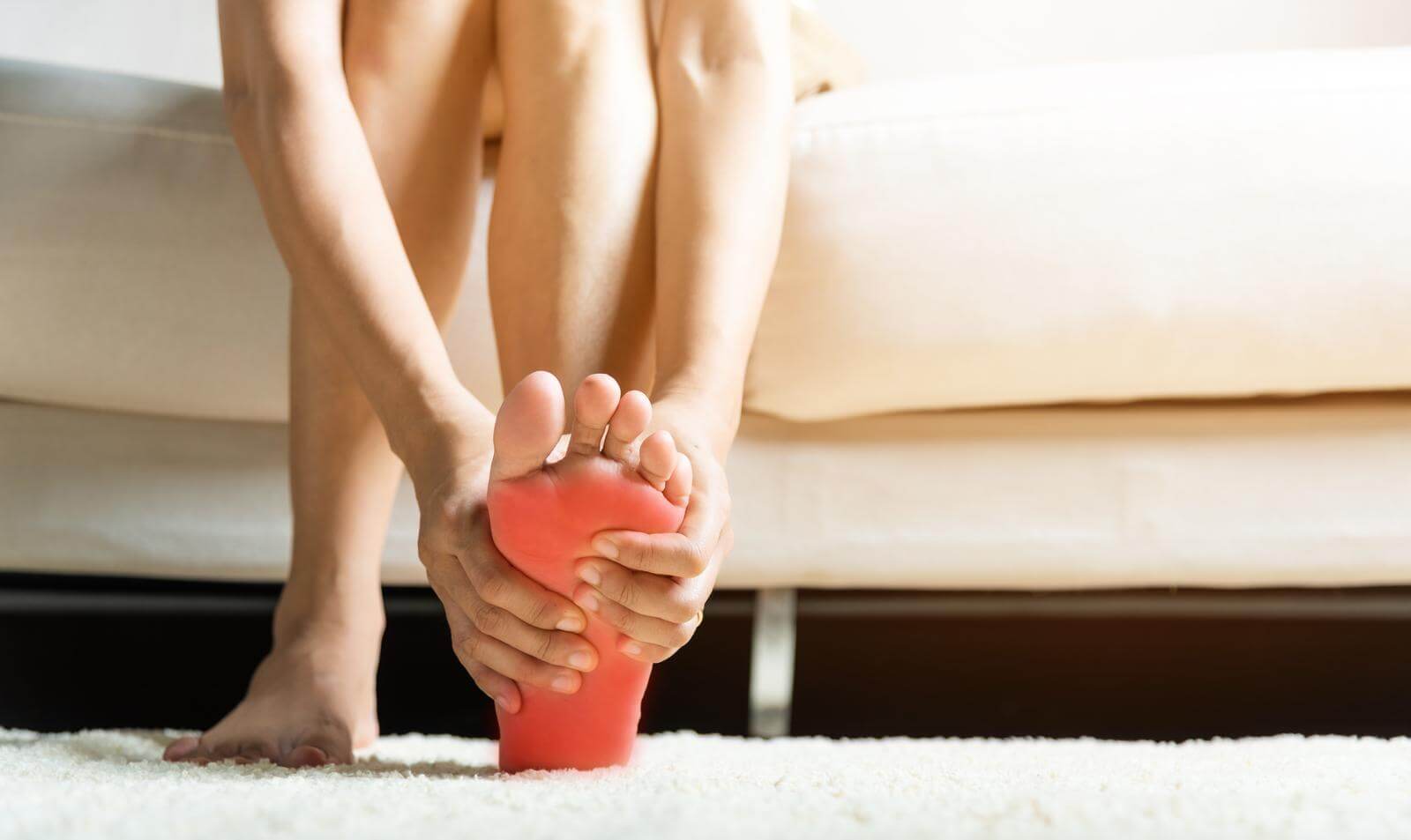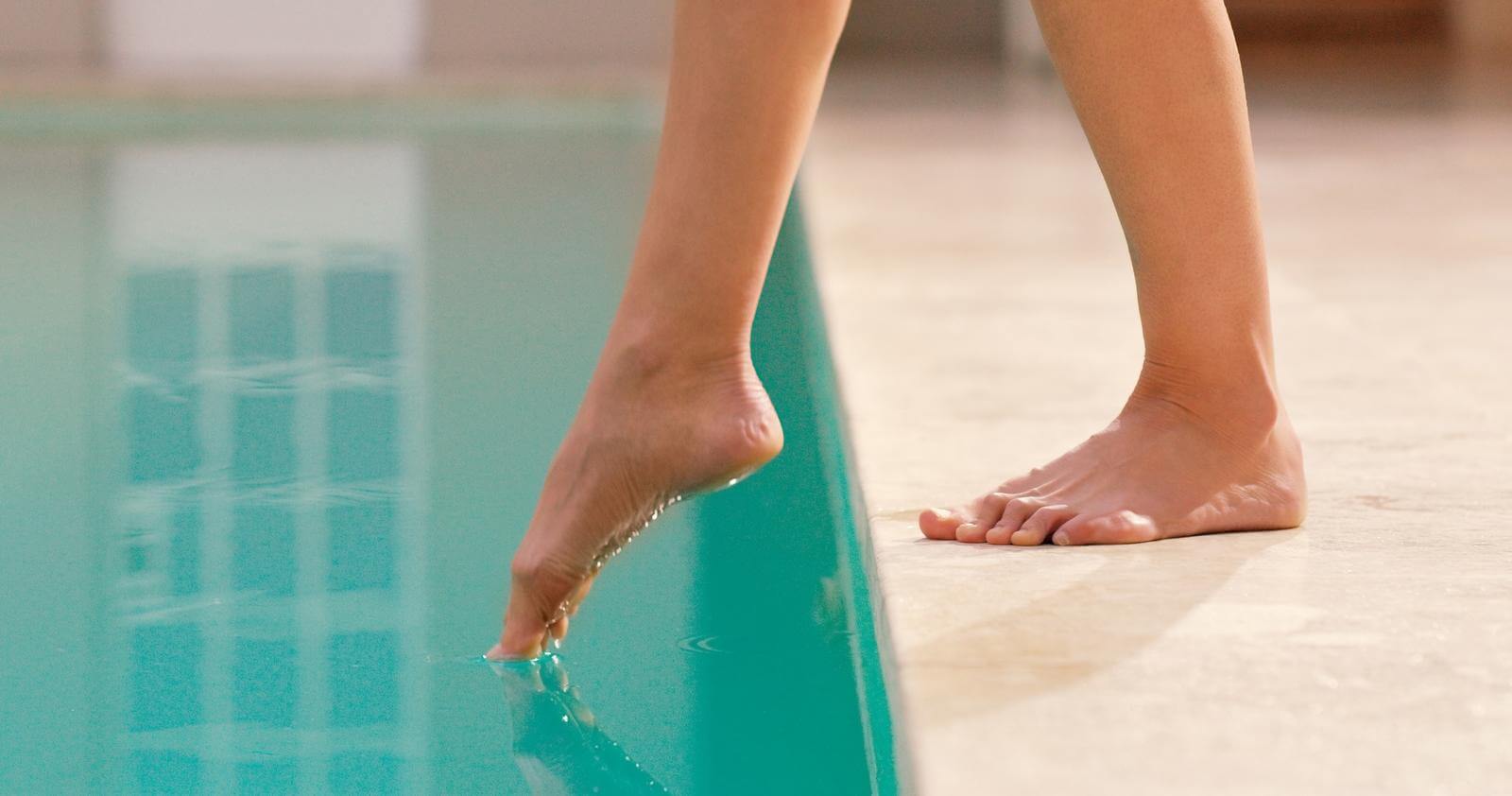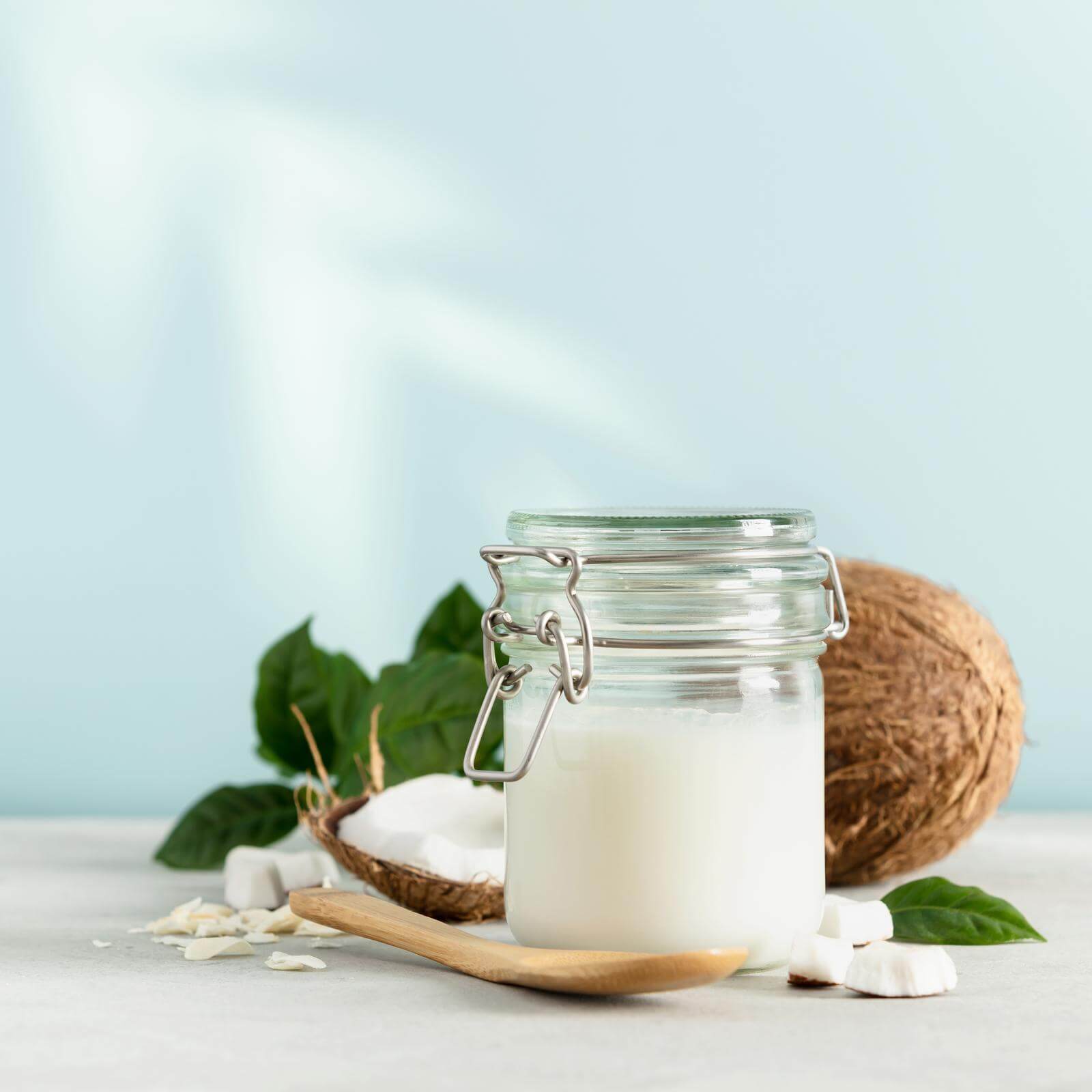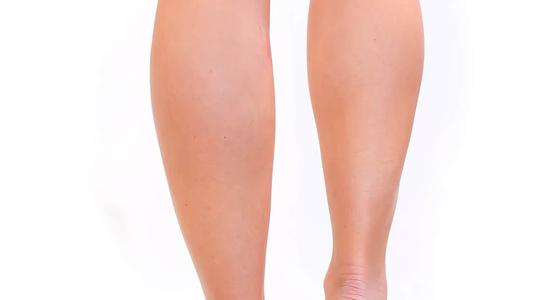
Foot yeast infections, caused by Candida, are a real concern. And, a Candida infection on the feet is not the same as athlete’s foot (Tinea pedis or foot ringworm). According to the United States National Center for Biotechnology Information, "Mainly, Trichophyton rubrum causes tinea pedis. Trichophyton interdigitale and Epidermophyton floccosum are also involved. Other occasional agents include Tricholosporum violaceum. T. rubrum accounts for about 70% of the cases." (Nigam, Saleh; 2020)
A foot yeast infection (not athlete’s foot) is likely caused by Candida—particularly the species Candida albicans (C. albicans). Candida is a genus of yeast that causes most of what are commonly known as yeast infections. So, if your feet have Candida overgrowth, then you in fact have a foot yeast infection.
It is important to understand the etiological (causal) aspects of a foot infection. If your foot infection is caused by a bacterial agent, a synthetic antifungal will not remedy the situation.
Fortunately, many natural essential oils fight both bacteria and Candida. So, even if you misdiagnose yourself, using natural remedies may still work to some extent—even on bacterial foot infections.
If you are wondering if you indeed have a yeast infection on your feet, you may want to take a short or long yeast infection test to determine your propensity for having a Candida problem. Candida Hub provides two tests (a long test and a shorter version) you can take from the comfort of your home. These tests, adapted from the late Dr. William Crook’s tests, are a great way to get a better idea of your likelihood of having Candida related health problems. To see these tests you can visit the following link:
If you are diabetic, or have sweaty feet, you may be at more risk for developing a yeast infection on the feet. The research we will discuss in this article should help elucidate this. Additionally, taking broad spectrum antibiotics can put you at a greater risk for having a yeast infection.
At the end of this article, we will discuss very effective natural cures for foot yeast infections. These treatments can be used safely from home, and may save you a considerable amount of money and time. Additionally, the first study we will examine provides a great picture of a foot yeast infection. This picture may help you better diagnose your current foot infection.
A 1/2 Day & Yeast is Gone!
Linda Allen suffered from yeast infections for years. Through researching natural medicine & Candida, she found an efficacious solution!
Linda is one expert you want on your side! Let her show you how to get rid of a superficial yeast infection in just 12 hours; AND, keep it gone!
A 60-day, 100% money back guarantee is provided.
Visit Official Site!Research on Foot Yeast Infections

The first study we will examine tells the story about a foot yeast infection in an otherwise healthy man. The study also provides an insightful photograph (which will be shown) of this man’s foot. This study was published in the International Journal of Immunopathology and Pharmacology [32 (2018)].
According to the introduction of this study, the skin is a complex and dynamic ecosystem in which fungi, viruses, and bacteria inhabit. Several genera of these microbes have been found to be common skin commensal organisms (a commensal organism is one that derives a benefit from another organism, while at the same time, not causing harm to that organism). Candida is one commensal organism that can develop on some body sites.
The study continues by relating that Candida species are frequent colonizers of the skin and mucous membranes of the body (the inside of the mouth, gastrointestinal tract, or vagina are examples of mucous membranes). Of the over 200 species of Candida that have been identified, only 15 of them are pathogens in people. Of these 15 Candida species that are pathogenic in humans, C. albicans is the most common pathogen. C. albicans is responsible for a wide array of diseases that range from superficial and mild to life threatening infections in immunocompromised individuals.
Concerning the man with the foot yeast infection, the journal study relates that a 37 year old man was referred to a clinic for itchy, pain-free papules (papules are small pink or red bumps that are easy to see on the skin) on his left foot. The man reported that he was not taking any antibiotics or corticosteroids.
The clinical examination of the man’s left foot showed reddish, scaly skin with many hard papules. No specific pattern of distribution was seen. The examination showed that there was unilateral spreading and scaly borders to the skin infection; this led them to hypothesize the man had a fungal infection. Laboratory examination revealed that it was in fact C. albicans that was causing the infections.
The next study we will look at investigated fungal infections in the feet of athletes and non-athletes. The research was published in Revista Iberoamericana de Micologia [22.1 (2005): 34-38].
The study included 129 participants, and the groups consisted of soccer players from China and Brazil. Those who did not engage in much athletic activity tended to sit for most of the workday. The microscopic life on these individuals feet was assessed and the results reported.
The research found that none of the Chinese soccer players, and none of the non-athletes had Candida on their feet. Only the Brazilian athletes were found to have Candida species on their feet. And, of the Brazilian athletes, 34.4% of them (which comprised 20% of the total study participants) had Candida species on their feet. The following quotation was taken from the study, and further delineates the researcher’s findings:
Tinea pedis was diagnosed more frequently among the non-athlete individuals. None of the Chinese athletes had tinea pedis alone. However, in this group onychomycosis was frequently higher when compared to the other groups. The fungal microbiota comprised Trichophyton rubrum (40%), Trichophyton mentagrophytes (36.4%) and Candida spp (20%). Candida spp was isolated only from Brazilian athletes.
Revista Iberoamericana de Micologia [22.1 (2005): 34-38]
The study states the reason for the finding of Candida in the Brazilian soccer player’s feet was attributed to the possible skin pH changes, sweating, and maceration (skin maceration happens when the skin is in contact with moisture for too long; and, the becomes wrinkled and lighter in color). The study goes on to say that the use of broad-spectrum antibiotics and frequent joint infiltration of corticosteroids were reported as contributing factors for the development of Candida.
Thus we can see from this research that sweat and humidity may play a significant role in people developing yeast infections on the feet. If you live in a hot climate, or a climate that is very humid, this may put you at a greater risk for developing a Candida problem on the feet or in other body areas that trap moisture.
Consequently, it may be a wise course of action to try and keep your feet dry and in contact with the air—weather permitting. Wearing sandals and other breathable footwear, along with breathable socks (or no socks) may also help mitigate Candida growth on the feet.
Diabetes Contributes to Foot Yeast Infections
A study, discussing diabetic patients and their propensity to develop fungal infections in their lower limbs, was published in Revista Iberoamericana de Micología [30.2 (2013): 103-108]. The authors state that diabetic patients are prone to fungal infections due to changes that occur in their immune system. These changes are not beneficial, and compromise their natural defenses in the skin and nails—especially in the lower limbs of the body.
The research was a six month study involving 163 diabetic patients with signs and symptoms of a skin fungal infection. Samples of the skin and/or nails from the lower limbs were taken and data from these patients was recorded.
Of the diabetic patients, 71 patients had test results showing fungi to be present. The research reported that yeasts were the most prevalent group of fungi. Yeasts were found from lesions of 34 patients. Of these yeasts, C. albicans and C. parapsilosis were the most frequently found Candida species—especially from nail lesions.
Eliminate Bacterial Vaginosis & Vaginal Odor
Jennifer O’Brien is one prominent expert on BV that knows how to get rid of vaginal odor. BV is a common infection that you don’t have to put up with.
Jennifer will show you how to naturally eliminate vaginal odor in just 3 days.
A 60-day, 100% money back guarantee is provided.
Visit Official Site!Naturally Getting Rid of Foot Yeast Infections

The feet are a body area on which essential oils can probably be applied full strength without causing too much harm. Yet, for safety, it is always recommended to significantly dilute the essential oils before you use them. Yet, using stronger concentrations of essential oils can bring about a more dramatic, expedient cure.
The risks of using an undiluted essential oil can be various damages to the skin. If you are unsure of how your body will react to an essential oil, a good way to determine your reaction is by doing a patch test.
A patch test is simply putting a small amount of a substance on an insensitive area of the body (such as the skin on the arm) and observing any reaction that occurs. Contact dermatitis, which is a skin rash caused by contact with a certain substance, may occur in the area of application when a patch test is done. If contact dermatitis occurs when you use an essential oil, you will know that your skin is going to react unfavorably to the oil. In such cases, you will want to not use the essential oil at all.
Patch testing is a great way to get a good idea about how your body will react to an essential oil.
According to a study published in Anais Brasileiros de Dermatologia [88.6 (2013): 879-888], patch tests are discussed in the following quote from this study:
Patch tests are tools used in the identification of the etiologic [causal] agent (s) of allergic contact dermatitis. It is a scientific method of investigation, with internationally defined rules and well-established foundations, which are under continuous review and updating.
Anais Brasileiros de Dermatologia [88.6 (2013): 879-888]
Mixing Antifungal Essential Oils
The prominent, and late, herbal medicine expert, Dr. James Duke, suggested that mixing antifungal essential oils would be a wise course of action for treating fungal infections. According to Dr. Duke, there is often a synergistic antifungal effect generated when more than one antifungal essential oil is used in conjunction with another. A quotation, taken from Dr. Dukes book The Green Pharmacy, explains this synergy in greater detail:
The synergy—the harmonious working together—of antifungal herbs has been demonstrated in several studies. In one test of ten plant species whose oils were antifungal, researchers noted that "combinations of the antifungal essential oils increased their activity remarkably." In a similar study, researchers noted that "in all the oil combinations, the antifungal potency was found to increase over individual oils."
Duke, James A.. The Green Pharmacy
Consequently, if you have a few antifungal essential oils on hand, it would be wise to combine them when you are treating a Candida problem on the feet!
Antifungal Carrier Bases

Possibly the best carrier base oil to use alongside essential oils is coconut oil. Coconut oil by itself can kill Candida. Coconut oil is also going to be gentle on the skin; yet, you may want to do a patch test with pure coconut oil before you use it to be extra safe. Additionally, coconut oil will allow you a great medium to mix your essential oils into; and, it is spreadable. Simply mix in the appropriate concentrations of essential oils into coconut oil and you will have a very efficacious, 100% natural cream for foot yeast infections.
There is a lot of information about coconut oil, and it is beyond the scope of this article. Candida Hub has a comprehensive article about coconut oil that you can peruse at your leisure. You can find this article about coconut oil at the link below.
Another carrier base you may want to consider is honey. Now, it is possibly an immediate thought that honey (a paste of carbohydrates) will be ideal food for Candida. Yet, in actuality, the osmolarity (high degree of solute to solvent) of honey actually makes it too sugary for Candida to utilize properly. Honey therefore, as research proves, arrests the development of Candida. Consequently, honey is a efficacious, viable home remedy for Candida problems of all kinds. An exception is that it will not work as a Candida treatment internally—if you eat it, the sugar in the honey becomes incredibly diluted in the digestion process. Without a high osmolarity, the diluted honey in the gut actually becomes a food source for yeast. Thus, this remedy is for external use only!
Honey is an ideal carrier base for essential oils due to it being spreadable and able to stick to the locality of the infection. You may want to mix in essential oils to honey and then place the mixture on your feet at night before you go to sleep. When you wake up in the morning you can wash off the honey / essential oil mixture before beginning your day.
Again, there is a lot more information about honey on Candida Hub. If you would like a more thorough delineation of honey as a yeast infection treatment, you can check out the following article on this website:
Choosing Essential Oils to Combat Candida
One essential oil that you might want to consider is peppermint. Peppermint is an essential oil that will inhibit the growth of, and kill, Candida—while at the same time possibly providing some itch relief. If your feet have been very itchy due to a Candida infection, peppermint oil might be the perfect addition to an essential oil blend for this condition. There is much more information about peppermint essential oil and yeast infection itchiness on Candida Hub. Feel free to check out the articles about these topics via the links below:
Possibly the most therapeutic essential oil to use to get rid of a foot Candida problem is tea tree oil. It should be noted that tea tree oil is a very strong natural remedy. Your skin may react adversely to even small concentrations of the oil. Conversely, you may be able to handle 100% tea tree oil on your skin without problems. Yet, due to the strength of this essential oil, you may want to limit yourself to a 5% concentration of the oil. And, performing a patch test with tea tree oil may save you from a painful outbreak of contact dermatitis.
Again, the broader picture of tea tree oil as a Candida treatment is beyond the scope of this article. For a great deal more information regarding this essential oil as a yeast infection treatment, you can read more on Candida Hub via the following link:
Clair Goodall: Author & Nature Lover
Clair Goodall is a bee-obsessed natural medicine convert from Minnesota. She is one expert you might want to know more about!
Clair will help you protect you and your family from toxic products and chemicals and help you discover solutions from nature.
Also, Clair’s book is backed by a 60-day, 100% money back guarantee
Visit Official Site!A Natural Yeast Infection Cure that Works in 12 Hours

Research published in Clinical Microbiology Reviews [12.1 (1999): 80-96] states that Candida is a widely prevalent organism. According to the study, Candida is most commonly present in the mouth. Of all healthy individuals, 31% to 55% of them, have Candida in their bodies. And, the most pathogenic species, C. albicans, is responsible for about 70% to 80% of all Candida infections.
Yeast infections can cause a serious loss of a person’s quality of life, and systemic invasion of Candida can cause a wide array of unusual health problems. Candida can drastically wreck your entire health—in addition to causing arduous yeast infections.
One woman who suffered for about 12 years with Candida related health problems was Linda Allen. Linda Allen, like many people, had a systemic problem with Candida. The yeast had overgrown in her body and was causing an array of health problems that seemed quite mysterious in origin. In addition, Linda Allen also suffered from frequent yeast infections that never seemed to stop.
Linda’s struggles with Candida started around the time she was diagnosed with a yeast infection. Linda decided to go to a doctor for help; and, the doctor gave her an antifungal to clear up the infection. The antifungal worked well at first, and the yeast infection resolved. Yet, it was not long before Linda developed another yeast infection.
Linda’s health continued to decline, and she ended up spending a small fortune on medical bills and treatments. Her doctor did not seem to know what exactly was wrong with her. Her physician kept prescribing antibiotics; and, they even tried putting her on allergy medication. Yet, nothing seemed to work.
Those that knew Linda wondered if her health was worse than she was admitting, or if she was a hypochondriac.
Things drastically changed in Linda’s life when she made the discovery of the source of all her health problems. This happened when she visited a naturopath. The naturopath knew exactly what was causing her troubles: systemic Candidiasis.
Although the naturopath did not permanently solve Linda’s Candida problems, they did point her in the right direction. Armed with the knowledge that her health issues were a result of Candida overgrowth, Linda began to diligently study Candida and natural medicine. She would even inquire of health professionals kind enough to lend her some of their time.
It took hard work, but eventually Linda developed a natural treatment protocol she hoped would eradicate the yeast from her body. Linda spent about a year refining her new approach before she gave it a try on herself.
After trying her treatment protocols, Linda’s results were astounding. After using her natural approach, she found her recurrent yeast infections stopped. Eventually, Linda’s health improved as well. In time, Linda had regained all her health and she was feeling normal and great once again. She had effectively cured herself of Candida.
Linda, on the advice of a doctor, went on to share her discovery with others who also suffered from Candida related health problems. Those who tried her system saw incredible results—they too were getting free from their Candida problems.
Linda eventually wrote an entire book which discusses her personal journey to yeast infection freedom and outlines the natural treatment plan to cure candida problems. Linda even developed a 12 hour natural cure that will get rid of a yeast infection in only 12 hours of time. And, by using her system, even systemic Candida problems can be mitigated and cured.
Linda has published her book with a large digital retailer, a subsidiary of the United States based firm Keynetics Incorporated. Linda’s publisher has great customer service and provides a quick way to instantly download Linda’s book.
Linda’s publisher also backs her book with a 60 day, 100% money back guarantee. If you are not satisfied with Linda’s book, you can get a full refund within 60 days of purchasing her book. This should be more than enough time to see how well Linda’s 12 hour cure will work!
For more about Linda’s personal journey to yeast infection freedom, to see reviews of others who gave Linda’s treatment plan a try, or to find out more about her exceptional book; you can learn more at Linda Allen’s website.
Author: Mr. Nicholas Gross

Nick Gross is a natural medicine enthusiast who has been researching and writing about natural medicine since 2008. Nick is primarily a web developer but also researches and authors written and video content about natural health. Nick has a bachelor’s degree in Management Information Systems from the University of Northern Iowa.
Disclaimer
The information on this website is not a prescription for anyone. This information is for informational or educational purposes only, and is not a substitute for professional medical advice or consultations with healthcare professionals.
Affiliate Disclosure
Some of the links provided on this website are affiliate links. When a purchase is made through these links, Candida Hub earns money from commission. This helps to keep the website up and helpful to people for free. Thank you for any support!
Stay Up to Date
If you enjoyed this article, consider following / liking our Facebook page. This page is primarily utilized to alert followers of new articles that are put on Candida Hub. Candida related news is also discussed. While you are there, you can see what has been more recently added to Candida Hub.
SOURCES:
- https://www.ncbi.nlm.nih.gov/books/NBK470421/ — Pramod K. Nigam; Dahlia Saleh. “Tinea Pedis.” StatPearls Publishing LLC [2020]
- https://doi.org/10.1177/2058738418781368 — Palese, Enzo, et al. "Cutaneous candidiasis caused by Candida albicans in a young non-immunosuppressed patient: an unusual presentation." International Journal of Immunopathology and Pharmacology 32 (2018): 2058738418781368.
- https://doi.org/10.1016/s1130-1406(05)70004-8 — Purim, K. S., G. P. Bordignon, and F. de Queiroz-Telles. "Fungal infection of the feet in soccer players and non-athlete individuals." Revista Iberoamericana de Micologia [22.1 (2005): 34-38].
- https://doi.org/10.1016/j.riam.2012.09.007 — Parada, Helena, et al. "Dermatomycosis in lower limbs of diabetic patients followed by podiatry consultation." Revista Iberoamericana de Micología [30.2 (2013): 103-108].
- https://doi.org/10.1590/abd1806-4841.20132323 — Lazzarini, Rosana, Ida Duarte, and Alessandra Lindmayer Ferreira. "Patch tests." Anais Brasileiros de Dermatologia [88.6 (2013): 879-888].
- Google Books — Duke, James A.. "The green pharmacy: New discoveries in herbal remedies for common diseases and conditions from the world's foremost authority on healing herbs." Emmaus, Pa: Rodale Press [1997].
- https://doi.org/10.1128/CMR.12.1.80 — Fidel, Paul L., Jose A. Vazquez, and Jack D. Sobel. "Candida glabrata: review of epidemiology, pathogenesis, and clinical disease with comparison toC. albicans." Clinical Microbiology Reviews [12.1 (1999): 80-96].







